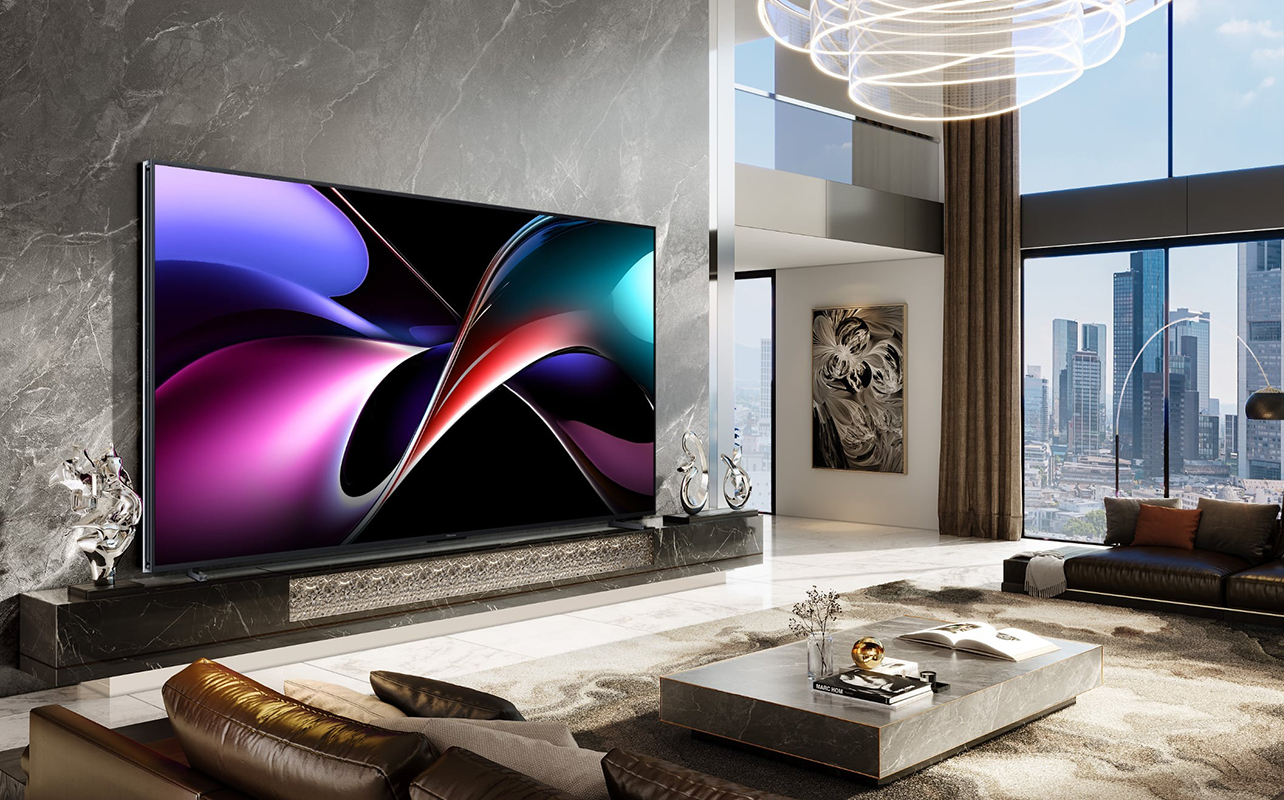
By using red, green, and blue LEDs directly, RGB LED TVs promise richer colours, higher brightness, and improved accuracy compared to many TV models today. With Sony, Samsung, and Hisense investing heavily in this technology, RGB LED TVs are shaping up to be the next big thing in TV and home theatre.
Here, we’ll break down exactly what RGB LED TVs are, how they differ from the TVs you know today, and if you should wait before adding one to your living room. By the end, you’ll have a clear, easy-to-digest understanding of this emerging technology and why it’s worth keeping an eye on.
What is an RGB LED TV?
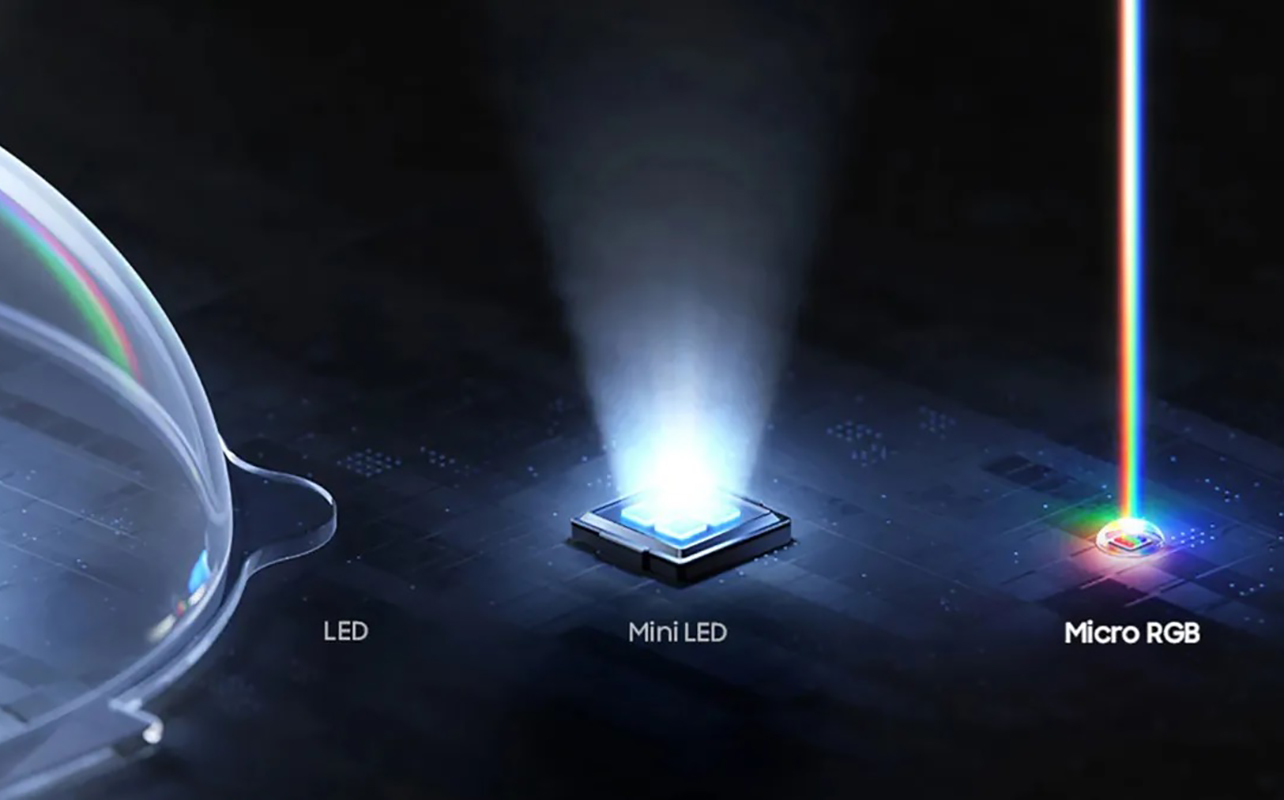
At its core, an RGB LED TV is a type of LCD TV, but with a major twist in how it produces light. (Micro RGB is the term Samsung uses for its iteration.) Traditional LED TVs use white LEDs—or blue LEDs with a yellow coating—to shine light through colour filters inside the panel. Those filters then create the red, green, and blue colours that form your picture.
An RGB LED TV, on the other hand, skips that filtering step. Instead, it uses individual red, green, and blue LEDs directly as the light source. Each tiny LED is already the right colour, which means the panel doesn’t have to rely on filters to fix the output. The result? Cleaner colours, higher brightness, and far more precision when rendering complex scenes.
If you’ve ever noticed that your current TV sometimes struggles with subtle shades, like a deep sunset looking a little too orange or a bright green field looking washed out, RGB LED technology is designed to fix that.
How does RGB LED TV work?
Let’s keep it simple. Think of your TV like a stage production. In a traditional LED TV, there’s one big spotlight (the white LED) shining on all the actors. Now, imagine using coloured filters placed in front of the spotlight to try and change the light.
With an RGB LED TV, instead of one spotlight, you have three: one red, one green, and one blue. Each light shines directly where it’s needed, mixing to create all the colours you see on-screen.
Because the LEDs themselves are pure in colour, the TV doesn’t lose brightness or accuracy through filters. That means you’ll notice whites that look brighter and crisper even in daylight, reds, greens, and blues that feel more lifelike, and better contrast overall since the TV can fine-tune the balance of each LED with incredible precision.
It’s important to note that RGB LED TVs are still LCD-based. They’re not self-emissive like OLED (where each pixel creates its own light). Instead, they use a next-generation backlight system that dramatically outperforms the standard white or blue LEDs found in most TVs today.
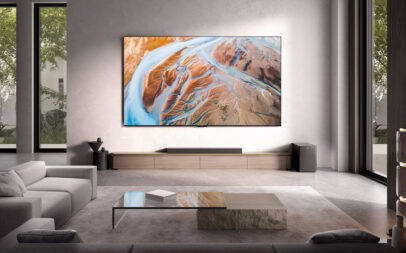
Don’t miss our TV buying guide
Learn about how to choose the right TV for your home. Our TV buying guide covers everything from screen size and display types to the latest smart features, so you can shop with confidence.
Key benefits of RGB LED TVs
So why should you care about RGB LED TVs? Here are some of the standout benefits:
Brighter displays
RGB LED TVs are capable of producing higher brightness levels than most existing LED or OLED sets. This is especially valuable for viewers with sun-filled living rooms or sports fans who don’t want to close the curtains during a Saturday hockey game.
Better colour gamut
By using red, green, and blue LEDs directly, these TVs can deliver a wider and more accurate colour range. For viewers, this means everything from nature documentaries to blockbuster movies will display with richer, more vibrant tones that feel true-to-life.
Reduced blooming
Blooming, or the halo effect around bright objects on dark screens, is minimized with RGB LED backlighting. That translates to sharper stars in a night sky or text that stays crisp without a distracting glow when you’re watching late-night shows.
Improved off-angle viewing
RGB LED TVs can maintain colour consistency better than traditional LED models when viewed from the side. That means whether you’re sitting right at the centre or watching from the corner of the couch, you’ll see a picture that still looks balanced and accurate.
RGB LED vs OLED
Is RGB LED TV it better than an OLED TV? OLED has been the gold standard for years because of its perfect blacks and cinematic contrast. But RGB LED TVs are being pitched as a serious challenger, especially for viewers who watch in bright rooms or want a more durable display.
Here’s a side-by-side comparison:
| Feature | RGB LED TV | OLED TV |
|---|---|---|
| Brightness | Extremely high, ideal for daylight viewing | Lower peak brightness, better in dark rooms |
| Colour accuracy | Pure colours thanks to direct RGB LEDs | Excellent, but can struggle in very bright scenes |
| Black levels | Very good, but not perfect | Perfect blacks (each pixel turns off completely) |
| Contrast | Strong, though slightly behind OLED | Industry-leading contrast |
| Durability | No burn-in risk, long lifespan | Potential burn-in with static content |
| Viewing angles | Improved over LED, still behind OLED | Excellent from almost any angle |
The takeaway? If you watch a lot of movies in a dark room, OLED still delivers the most cinematic experience. But if you’re after brightness, colour punch, and durability, RGB LED TVs may soon become the better choice.
Challenges and limitations
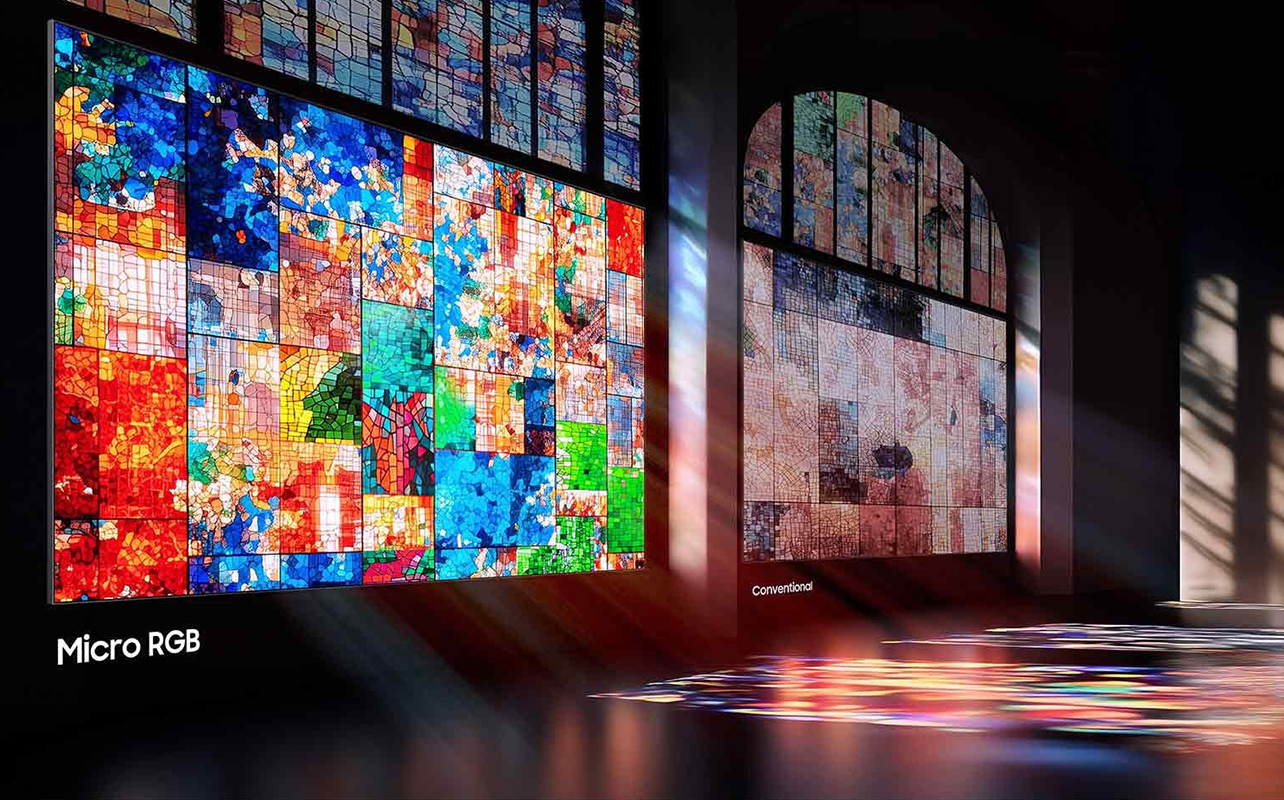
As with any new technology, there are a few caveats worth knowing:
- Cost: Early RGB LED TVs come at a premium, with some early models priced at over $30,000.
- Black levels: While improved over standard LED, they can’t quite match OLED’s ability to hit perfect black.
- Availability: Right now, these TVs are limited to premium flagships and prototypes. Mainstream models aren’t expected until 2026.
That means while the promise is huge, most Canadians won’t be bringing home an RGB LED TV just yet.
RGB LED TVs arrive in Canada: Hisense and Samsung lead the next display revolution
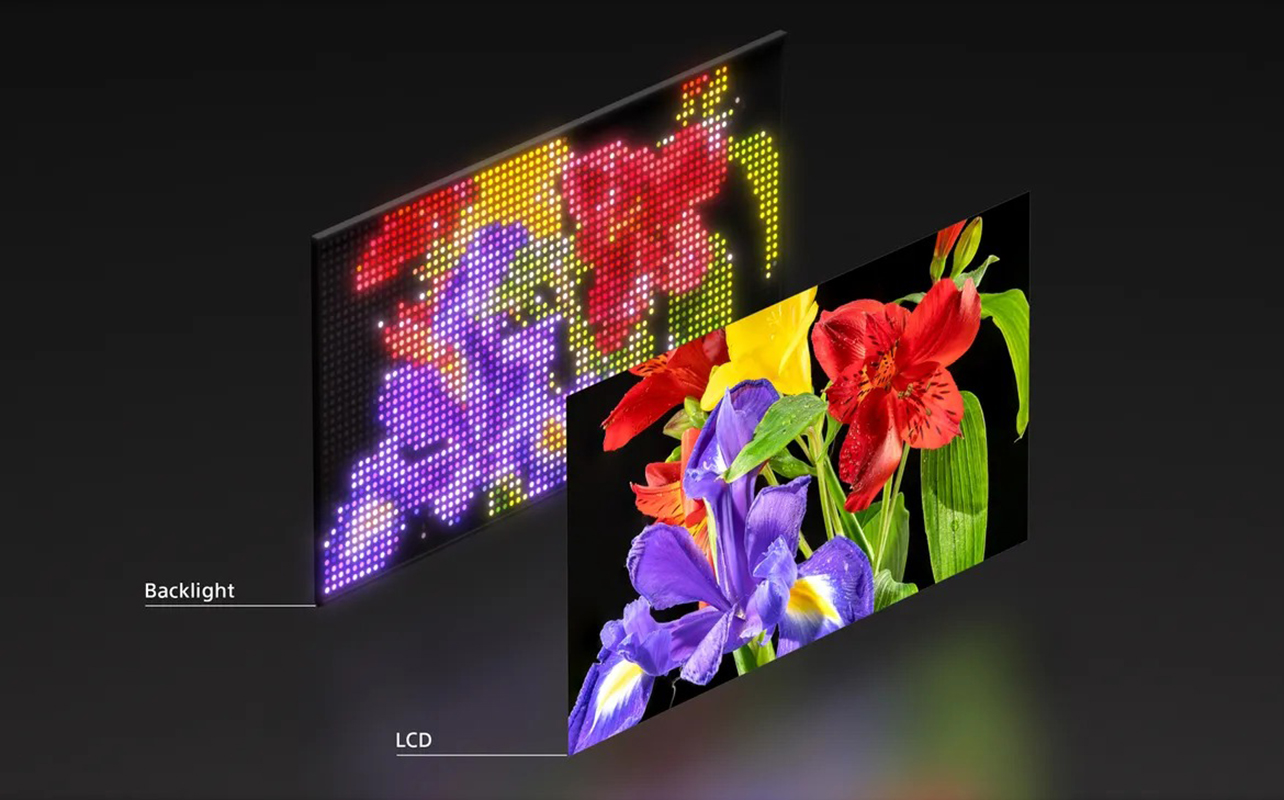
Hisense has officially become the first brand to bring RGB Mini-LED TVs to Canada, setting a new benchmark for what’s possible in-home entertainment. The new Hisense UX Series TVs (116UX and 100UX) are now available at Best Buy Canada.
Powered by true RGB Mini-LEDs, the UX Series delivers exceptional brightness, contrast, and colour accuracy that outperforms many OLED and QLED displays.

Hisense RGB Mini-LED Google TV features
- True RGB Mini-LED backlight
- Up to 8,000 nits peak brightness (116UX)
- Dolby Vision, HDR10+, and Hi-View Engine X
- 165 Hz, VRR, and FreeSync Premium Pro for gaming
Because this is truly next-gen tech (and in very large sizes for now), it’s especially suited for viewers who want a premium home-theatre experience in a room that can handle a large screen.
Samsung enters the RGB era
Samsung has entered the RGB space with its Vision AI Micro RGB Smart TV (MR95F), available in a massive 115-inch screen size. This model combines Samsung’s premium craftsmanship with Micro RGB innovation, pushing display performance to new heights.

Samsung Vision AI Micro RGB Smart TV features
- Micro RGB Technology with AI-driven picture optimization
- Micro RGB Precision Color for lifelike accuracy
- Glare-Free display for comfortable viewing
- Vision AI and Tizen OS for intelligent control
Engineered for large-scale home theatres, the MR95F delivers exceptional colour precision, contrast, and realism—showcasing how Samsung is shaping the future of premium displays.
With both Hisense and Samsung leading the charge, RGB and Micro RGB TVs have officially arrived in Canada. As availability grows through 2026 and 2027, expect more screen sizes and accessible price points, making RGB LED TVs a true option for everyday shoppers.
RGB LED TVs represent the future

RGB LED TVs are one of the most exciting innovations in display technology we’ve seen in years. By using pure red, green, and blue LEDs as a backlight, they promise unmatched brightness, colour accuracy, and durability, features that could make them a true rival to OLED. As brands like Sony, Samsung, and Hisense expand their RGB TV lineups over the next few years, this technology could well become the next major step in home entertainment. So keep an eye on it because the future of TV might just be brighter, bolder, and more colourful than ever before.
If you’re ready to make the upgrade to OLED, QLED or Mini-LED TVs, check out the lineup of amazing TVs at Best Buy Canada.

This article was drafted using AI technology and then reviewed, fact-checked, and revised by a member of our editorial team.




